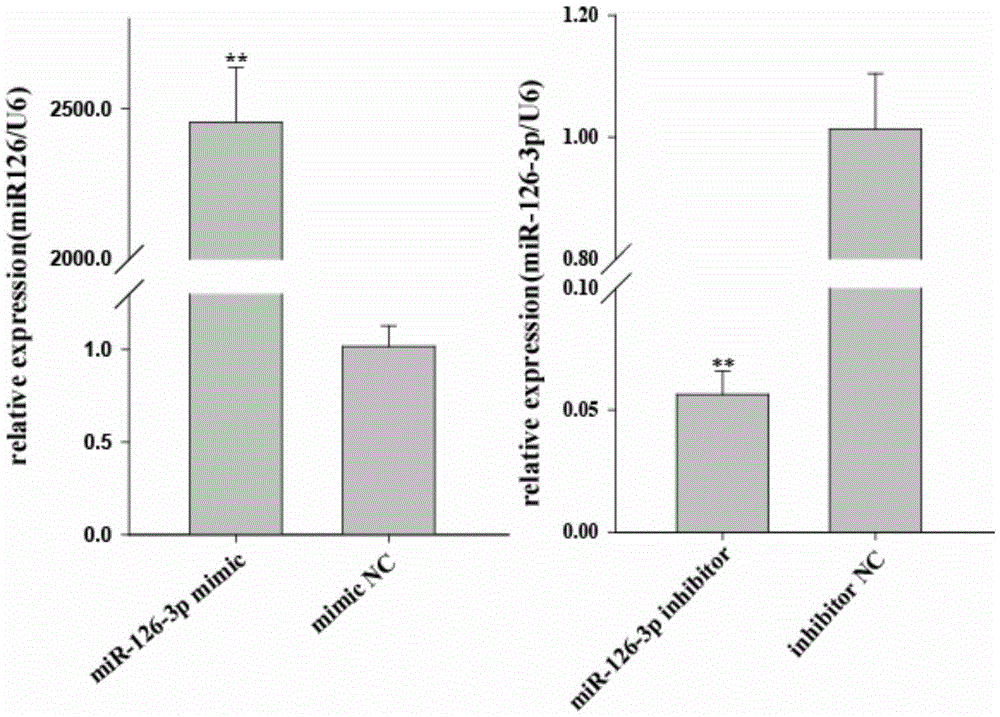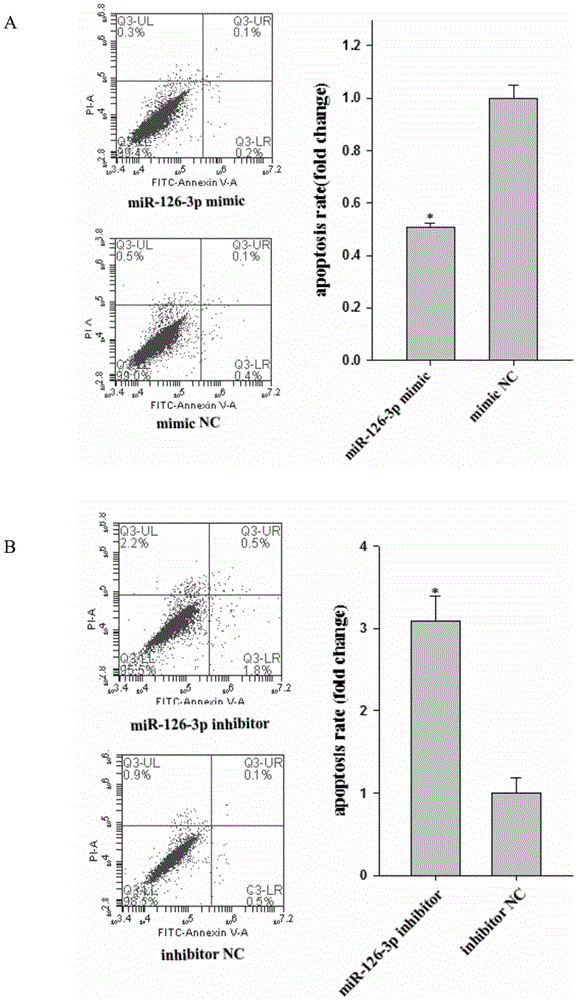Application of miR-126-3p to porcine ovarian granular cells
A technology of granulosa cells and ovaries, which is applied in the application field of miR-126-3p in porcine ovary granulosa cells, can solve the problems of high cost and difficult verification at the individual level of living pigs, and achieve reliable results
- Summary
- Abstract
- Description
- Claims
- Application Information
AI Technical Summary
Problems solved by technology
Method used
Image
Examples
Embodiment 1
[0039] Embodiment 1 The cultivation of ovarian granulosa cells
[0040] (1) Collect the ovaries at the slaughterhouse, put them in a thermos bottle at 37°C with PBS or normal saline (containing 1% double antibody), and quickly transport them back to the laboratory;
[0041] (2) After washing the collected ovaries with preheated PBS (containing 1% double antibody) for 3 times in a sterile culture room, they were quickly transferred to the ultra-clean workbench; a 1mL sterile disposable syringe was inserted shallowly into the cavity of the ovary Absorb follicular fluid from follicles;
[0042] (3) Place the aspirated follicular fluid in a 15 mL centrifuge tube containing an appropriate amount of DMEM, and centrifuge at 1000 rpm for 6 min at room temperature;
[0043] (4) Discard the supernatant, resuspend and centrifuge in DMEM, and wash the cells twice; prepare DMEM complete medium: 89% DMEM+10% FBS+1% double antibody;
[0044] (5) Aspirate the cell resuspension and complete ...
Embodiment 2
[0046] Example 2 Inoculation and transfection of ovarian granulosa cells
[0047] (1) The granulosa cells grow to about 90%, discard the medium, and wash 3 times with preheated PBS containing 1% double antibodies (the double antibodies are penicillin and streptomycin);
[0048] (2) Add trypsin for digestion, put it in the incubator for about 3 minutes, observe under the microscope until most of the cells float, immediately add the same amount of stop solution to stop the digestion;
[0049] (3) DMEM was washed twice, and centrifuged at 1000rpm for 5min during this period;
[0050] (4) Gently resuspend the cell pellet with complete medium, evenly distribute into each well, supplement the volume with complete medium, shake gently, and culture in the incubator;
[0051] (5) About 24 hours, observe the state of granulosa cells, and prepare for transfection when the confluence of the cells reaches about 80%;
[0052] (6) transfection method is by Invitrogen company's 3000 kit...
Embodiment 3
[0056] Embodiment 3qRT-PCR
[0057] The qRT-PCR detection of gene and miRNA in the present invention adopts SYBRPremixExTaq kit and SYBRPrimeScriptmiRNART-PCRKit of TaKaRa Company respectively. In the experiment, the comparative Ct value method was used to detect the content of miRNA or gene in the sample, and the specific calculation formula was as follows:
[0058] Relative gene expression = 2 -{〈﹙实验组目的基因Ct值﹚-﹙实验组内参基因Ct值﹚〉-〈﹙对照组目的基因Ct值﹚-﹙对照组内参基因Ct值﹚〉}
[0059] For the internal reference gene, U6 is used as an internal reference for miRNA detection, and GAPDH is used as an internal reference for gene detection. The qRT-PCR primers used in the present invention are:
[0060] qRT-PCR-BCL2Forward: 5'-GAAACCCCTAGTGCCATCAA-3';
[0061] Reverse: 5'-GGGACGTCAGGTCACTGAAT-3';
[0062] qRT-PCR-Caspase3Forward: 5′-GACTGTGGGATTGAGACG-3′;
[0063] Reverse: 5′-ACCCGAGTAAGAATGTGC-3′;
[0064] qRT-PCR-PIK3R2Forward: 5′-GGCAAGATCAACCGCACACAAG-3′;
[0065] Reverse: 5′-CACCACCACAGAGCAGGC...
PUM
 Login to View More
Login to View More Abstract
Description
Claims
Application Information
 Login to View More
Login to View More - Generate Ideas
- Intellectual Property
- Life Sciences
- Materials
- Tech Scout
- Unparalleled Data Quality
- Higher Quality Content
- 60% Fewer Hallucinations
Browse by: Latest US Patents, China's latest patents, Technical Efficacy Thesaurus, Application Domain, Technology Topic, Popular Technical Reports.
© 2025 PatSnap. All rights reserved.Legal|Privacy policy|Modern Slavery Act Transparency Statement|Sitemap|About US| Contact US: help@patsnap.com



